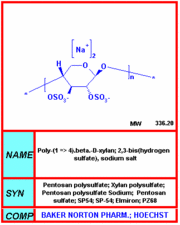NEW YORK -- Think about interstitial cystitis before you start planning invasive procedures for a woman with endometriosis or chronic pelvic pain, Dr. Maurice Chung advised at an international congress sponsored by the Society of Laparoendoscopic Surgeons.
"Why do so many endometriosis patients come back with pain, but then you open them up or look inside and see no pathology?" asked Dr. Chung, director of the Regional Center for Chronic Pelvic Pain, Lima, Ohio. "A lot of chronic pelvic pain (CPP) patients just don't have very much endometriosis, while a lot of patients with very big endometriomas don't hurt very much."
He believes that the key to this seeming paradox is interstitial cystitis, a condition he considers the "evil twin" of endometriosis. There is a 70%-90% concordance between the two conditions, leading Dr. Chung to recommend that physicians ask about urinary symptoms very early in the diagnostic work-up of a patient with CPP. It could end up avoiding a lot of unnecessary surgery.
Dr. Chung described his experience treating 60 women, aged 19-62 years, presenting with CPP from May 1999 to October 2000. All had intractable pain, dysmenorrhea, or dyspareunia. The patients had negative cervical cultures but positive cervical motion tenderness and positive bladder tenderness.
Endometriosis was assessed via laparoscopy, and if found, was excised at the time of surgery. Of the 60 patients, 56 had endometriosis, with 48 having "active" disease (presence of a biopsy-confirmed lesion) and 8 having "inactive" disease (prior biopsy-confirmed lesions but current biopsy negative).
But 58 of the 60 patients had interstitial cystitis, which was diagnosed by history (bladder pain, dysuria, increased voiding frequency, and increased urgency in the absence of urinary tract infection) and by hydrodistention and cystoscopy. In many cases, the cytoscopy revealed significant bladder wall glomerulation.
Overall, 54 of the 56 patients with endometriosis also had cystitis. Dr. Chung said that the overlap in his cohort was somewhat higher than the 40%-70% reported by other investigators. But even at 70%, the co-occurence warrants serious attention.
"We shouldn't continue to do what we have all been doing, which is only referring for cytoscopy if the laparoscopy is negative. We need to do the urinary work-up up front." He advised gynecologists who cannot do hydrodistention cystoscopy to make friends with a urologist who does.
In asking his patients about bladder problems, Dr. Chung also found significant familial clustering of endometriosis with interstitial cystitis. Many patients reported that their mothers, sisters, or aunts have or had both endometriosis and bladder problems, such as recurrent urinary tract infections.
Cystitis is thought to be related to a defect in the bladder wall that results in potassium permeability defect. Normally, the bladder wall is water tight and positively charged. In patients with this condition, there are defects in the uniformity of this positive charge, allowing positively charged potassium ions to permeate into the wall tissue, causing irritation.
Potassium permeability defect can be tested by instilling potassium chloride solution into a patients bladder and seeing if it induces symptoms, said Dr. Chung, also of the Medical College of Ohio, Toledo.
The reasons for the concordance with endometriosis are not entirely clear, but Dr. Chung believes that the two are etiologically related and hypothesizes that some sort of genetically mediated autoimmune component underlies both conditions.
He acknowledged that his view on this is somewhat controversial. There are many gynecologists and urologists who question whether cystitis--largely a diagnosis of exclusion--is truly a distinct disease entity.
Management of the bladder symptoms is not easy Elmiron (pentosan polysulfate sodium), a drug that can increase the positive charge of the bladder wall, will relieve pain and other symptoms in about 60% of patients. But at 100-200 mg twice daily, it gets expensive. Lupron, the GnRH analog given to some patients with endometriosis, also may attenuate the bladder symptoms by changing the hormonal environment. But again, the cost and potential risks associated with long-term Lupron therapy make it a less-than-ideal option.
Beyond that, the only management approach is dietary. Patients should avoid intense spices, highly acidic foods, or other irritants, and they should drink plenty of fluids. Dr. Chung noted that the National Institute of Diabetes and Digestive and Kidney Diseases has developed a stabilizing diet for cystitis patients, but as with all diets, it can be difficult to follow long term.
COPYRIGHT 2002 International Medical News Group
COPYRIGHT 2002 Gale Group



